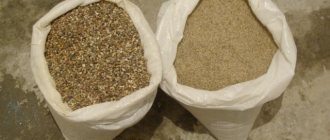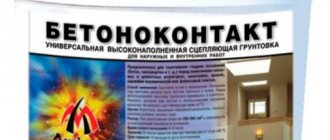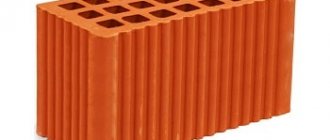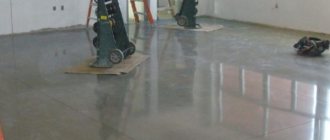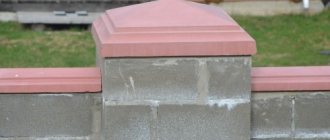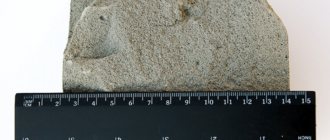Asbestos groups
There are 2 main groups:
- serpentinite (chrysotile or white asbestos)
- amphiboles (actinolite, anthophyllite, tremolite, amosite or brown asbestos)
They differ in chemical composition, structure and have different effects on humans.
The use of amphibole asbestos has long been prohibited throughout the world and the only type of asbestos currently used is chrysotile.
If you look at photographs of asbestos, you can see that it is made up of fine fibers. It is a fire-resistant, flexible and durable fibrous material. It is very popular due to its unsurpassed qualities. Durability, practicality, heat resistance - these are just a few of them. Important information about asbestos: https://www.facenews.ua/press/2018/401437/
The fibers can withstand temperatures up to 1500 degrees Celsius, while even in the epicenter of a fire the temperature usually does not exceed 1350. It is important that when heated, chrysotile asbestos associated with cement is not dangerous and does not emit harmful particles to human health.
Services
Proper asbestos removal
WindAir - Asbestos detection and removal.
Asbestos is very dangerous to human health. In the Republic of Estonia, as in other developed countries, there are laws on the safe conduct of asbestos work. Legislation in the Republic of Estonia: Occupational health and safety requirements for asbestos work.
Where can asbestos be found?
Many materials containing asbestos were used in building structures, especially asbestos-cement (eternite) products and insulation materials. Here in Estonia, mainly in 1962–1994, corrugated ethernite roofing sheets with 6 and 8 waves manufactured in Kunda were used, of which more than 2.2 million tons were produced (10–15% chrysotile asbestos). About 80% of our older homes, industrial and public buildings contain various asbestos materials.
Asbestos can be found:
• in the roof (eternite, roofing cardboard and roofing sheets); • in walls (eternite, asbestos-cement slabs and panels); • in ceilings (floors) (asbestos-cement slabs, sprayed asbestos, thermal insulation); • in building facades: external cladding, balcony railings, gutters; • in window sills; • in waste chute shafts (eternite); • in ventilation ducts (eternite, seals); • in water and sewer pipes (pipes, couplings); • in electrical installations (cable ducts, insulating tapes, asbestos cardboard); • in heating equipment: boilers, pipes, furnaces, stoves (thermal insulation and fire retardant materials); • in floor covering slabs (vinyl-asbestos slabs); • in foundations (waterproofing); • in elevators (shafts, brakes); • in metal structures (sprayed asbestos).
The owner and user of the building must know whether there is asbestos in the building.
To do this you need:
• get acquainted with the building design; • find out what repair and maintenance work was previously carried out; • check whether materials containing asbestos were used; • if in doubt, assume that you are dealing with asbestos; • before carrying out repairs (renovation), consult with experts, for example, an architect, construction engineer or labor inspector; • order an inspection of the building from a competent person or institution.
Asbestos began to be produced and mass-produced products from it already in the middle of the 19th century. In fact, asbestos is a mineral belonging to the fibrous silicates (a fibrous variety of minerals of the serpentine and amphibole groups). Fibrous serpentine is called chrysotile asbestos. Amphibole asbestos - amosite (grunerite), anthophyllite, actinolite, tremolite and crocidolite (riebeckite). Chrysotile asbestos (chrysotile asbestos) in its chemical composition is magnesium hydrosilicate; amphibole asbestos also contains iron, calcium or sodium. Asbestos is a fire-resistant and weather-resistant material, with poor thermal, electrical and noise conductivity, relatively high tensile strength, elastic, resistant to alkalis and most acids, with a large specific surface area, good adhesion to reinforcement, and is also a decorative material. Thanks to these properties, this material was considered indispensable in several sectors of the economy. In industry, chrysotile asbestos, crocidolite asbestos and amosite asbestos are mainly used.
Asbestos has also been found in drinks that were prepared using asbestos-containing filters or asbestos-contaminated water.
To determine air pollution by asbestos, an air sample is taken from the location under study using an air sampling device. There are several types of air sampling devices, but most draw air (for example, using a vacuum pump) through a filter onto which airborne particles are deposited. The type of filter and subsequent handling of it depends on the analysis method. For example, phase contrast microscopy uses membrane filters that are processed in acetone and triacetin vapors. Asbestos and its varieties are identified using microscopes and analyzers; a light (optical) microscope, a scanning electron microscope and a transmission (transmission) electron microscope, an X-ray microanalyzer, as well as a diffractometer and infrared spectrophotometer are well suited for these purposes. Asbestos fiber is identified based on its shape, optical properties and chemical composition. Asbestos fibers are difficult to distinguish from some other mineral and organic materials, so analysis data must be selected judiciously.
PROPOSED WORK:
• identifying the location and type of asbestos; • mapping of asbestos sites; • proper disposal.
https://youtu.be/_QRuyFSYExU
What is chrysotile asbestos (fiber) made from?
Popular brands of asbestos are widely used in construction, chemical and textile industries, rocketry and mechanical engineering. It includes:
- Asbestos cords - they are used for thermal insulation in steam, water or gas environments.
- Pipes have a wide range of applications (from the construction of collectors to the construction of chimneys).
- Fabrics. It is used as a heat-insulating and cushioning material, as well as for the manufacture of fire-resistant suits, helmets, and gloves.
- Asbestos cement sheets. Sheet asbestos is an effective thermal insulation for premises of any purpose. Its price is not high, and it is used not only in industry, but also for private needs. For example, corrugated asbestos-cement sheet, or simply slate, is now a very popular roofing material.
The following are made from chrysotile asbestos:
- Brake bands, transmission and drive belts, clutch discs, gaskets and packings for heat engines.
- Special paper (cardboard) that is used as a protective heat-insulating material.
- Many other products where thermal insulation, fire resistance and flexibility are required.
Photo: use of chrysotile
This mineral is deservedly widely used by industry, since the characteristics of asbestos are unique:
- Low electrical and thermal conductivity
- High adsorption
- Resistant to radiation, ozone and oxygen
- Durability
Mining and production
Industrial mining of asbestos is usually carried out by open-pit mining in quarries or by laying underground tunnels, where the rock is manually chopped with a hammer. After this, a high-pressure air jet is used to separate the asbestos fibers from the extracted rock and small particles that are subject to crushing and sieving. By type it is customary to divide:
- on crocidolite - it is also called “blue asbestos”;
- amosite - “brown asbestos”;
- chrysotile - “white asbestos”, the most popular type.
The process of sorting the “raw” material is also of great importance, since the length of the resulting fibers, their thickness, as well as tensile strength and refractoriness largely depend on the breed and determine the scope of their further application.
The danger of chrysotile asbestos - myth or reality?
Not long ago we came across an interesting article about asbestos: https://apostrophe.ua/pages/asbest-vred-asbesta-dlya-lyudej-realen-ili-vyduman
In Ukraine they want to introduce a ban on chrysotile asbestos. They even give a reason - supposedly asbestos causes cancer.
And, quite naturally, the main questions that concern the consumer are:
- Is it possible to use chrysotile containing materials in construction?
- If you buy such material, will it be safe?
- What to do with chrysotile cement sheets, slates and pipes that have faithfully served their owners for many years?
- Is it really necessary to get rid of them and look for an alternative?
To understand whether it is safe to use chrysotile asbestos in construction, you need to study detailed information about it.
Scientists and doctors about the effects of asbestos on the body and the environment
Different types of asbestos act on the body differently, despite the fact that this group of minerals has one collective name - asbestos (Ukrainian azbest). It consists of two main types - amphibole and chrysotile.
For many decades, the world's leading scientists have been studying the effect of asbestos on the human body, its properties, harm and benefits have been studied in detail.
The harm from asbestos is clearly exaggerated; it is simply very profitable for someone to attribute to all types of asbestos the harmful effects of amphibole - just one of the types. But this is not true, and leading scientists have long proven this. The health hazards of asbestos depend on what type of asbestos is in the lungs. If it is amphibole, then yes - this asbestos is dangerous, the harmful properties of amphibole asbestos have been proven. Scientists have carefully studied the harm and toxicity of this type of asbestos. But they also studied chrysotile asbestos in the same way. And if we hear somewhere about the danger of chrysotile asbestos, then we must immediately remember that the harm of asbestos-cement cords, slabs and sheets has not been proven. The harm of asbestos when heated and the danger of asbestos in construction have also not been proven. Even if standard occupational safety rules are not followed and chrysotile dust gets into the worker’s lungs, after 10 days the chrysotile will be completely eliminated from the body. After all, chrysotile fibers, unlike amphibole fibers, quickly dissolve in the alkaline environment of the human body.
Both amphibole and chrysotile are all types of asbestos; they have significant differences. Amphibole asbestos is indeed very harmful to human health, but chrysotile asbestos has been proven by international scientists to be safe when used in a controlled manner.
Studies of the effect of amphibole on human health have shown that it causes irreparable harm. Amphibole, along with calcium, contains iron, which, when it gets into the lungs, injures them with its needle-like fibers.
It was amphibole asbestos that was once actively used in Western Europe. It was used in the construction of houses, added to plaster, and to many other materials. This led to widespread diseases of pulmonary fibrosis, which stimulated scientists to conduct research into the effect of asbestos on human health.
Soft chrysotile fibers contain magnesium and calcium, therefore, when they enter the body, they quickly dissolve and are excreted without leaving traces.
In 2013, a group of leading toxicologists from Switzerland, Canada, the USA, Great Britain, Spain and Mexico finally destroyed the myth about the dangers of chrysotile. Scientists have published the results of a comparative analysis of the dangers of chrysotile and amphibole asbestos for the human body. It turned out that the carcinogenicity of fibers of different types of asbestos is very different and depends on their diameter and type. An analysis of the studies has shown different carcinogenic activity of chrysotile and amphibole asbestos regarding the occurrence of lung tumors. It turned out that low concentrations of chrysotile do not pose any danger to human health. Moreover, it has been proven that even high concentrations are harmless with short-term exposure.
Consequently, chrysotile does not pose a danger to humans and you can safely use products that contain it.
As for the production of building materials containing chrysotile, there is indeed a risk of exposure to dust, but high-quality protection negates all possible negative consequences of contact with asbestos. In addition, it is not pure fiber, but a mixture with cement, gypsum, bitumen or rubber.
Types of asbestos
Fine-fiber minerals, which are hydrosilicates, are divided into two types:
- chrysotile asbestos;
- amphibolasbestos.
The second variety is characterized by a number of properties harmful to the human body. Amphibole has fragile needle-shaped fibers, and therefore the entry of mineral particles into the lungs is associated with a high risk of malignant tumors. Compared to chrysotile, this type of mineral has less attractive technical and operational properties due to easily breaking structural bonds. In many countries, the production of amphibole-based materials is prohibited.
Properties of chrysotile
Chrysotile consists of microthin fibril tubes. For use in the production of materials, the mineral is divided into fibers with a diameter of 10–100 microns. Chrysotile has:
- chemical inertness;
- active adhesion to binding materials;
- heat resistance;
- adsorption capacity.
These properties have determined the demand for fine-fiber minerals in the manufacture of building materials and industrial applications.
Chrysotile is harmless to humans, therefore materials based on it are permitted for production and use in the Russian Federation.



